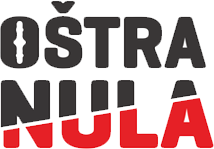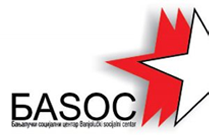The Jelšingrad Steel Foundry was established in 1936 as an iron and steel foundry, and it also operated as a mechanical workshop. Initially, it was known as the “Factory for Casting Iron and Metals”. It was owned by civil engineer Viktor Cajz. A year later, all production and supporting facilities were built, along with the complete equipment necessary to start production. During World War II, the foundry was destroyed. Interestingly, it was demolished the day before the liberation of Banja Luka, on April 21, 1945, along with all buildings and plants. In 1946, the reconstruction of Jelšingrad began. The foundry was nationalized, placing production under workers’ management.
By 1964, the foundry, under a self-managed economic system, had significantly developed and become one of the key foundries for iron, steel, and non-ferrous metals in Yugoslavia. Nine years later, in 1973, Jelšingrad operated as a labor organization with six main branches: the Steel Foundry in Banja Luka, the Steel Foundry in Bačka Topola, the Machine Tool Factory in Banja Luka, the Machinery Factory in Gradiška, the Light Machine Tools and Cranes Factory in Prnjavor, and the Machinery and Equipment Factory in Kotor Varoš. Before the war, the company employed more than two thousand workers. Thanks to cooperation with the Belgian company LWG, Jelšingrad exported its products, primarily large hydraulic presses, to international markets, further contributing to its economic importance. The self-managed planned economy was closely linked with the education system, recognizing the need for new personnel in the future. As a result, factories in Banja Luka established faculties to train new workers, who were guaranteed employment upon completing their education. Jelšingrad initiated the Faculty of Mechanical Engineering in Banja Luka. Thus, in addition to becoming a strong economic center, the city also evolved into a university city.
Due to the outbreak of war and nationalist propaganda, which served as a cover for ruthless privatization and plundering, “Jelšingrad” was taken out of the hands of the workers and systematically destroyed. The leadership, in collusion with the new nationalist government, drove the company into deep debt. During the war, especially in 1993, Jelšingrad’s sub-account signatories withdrew money from an account opened in Belgium. By 2001, the Tax Administration had blocked Jelšingrad’s accounts. Although the workers tried to fight for the factory, many lost their jobs, and by the end of 2005, full privatization had begun.
Compared to the self-managed system, Jelšingrad operated at only 10% of its capacity in the post-war period. In June 2005, the foundry was privatized by Livar from Ivančna Gorica, which acquired 67.97% of the company’s capital. Today, Jelšingrad is being sold once again, with the company “BLL Steel” from Banja Luka planning to take over. The city of Banja Luka has offered two plots of land in the Jelšingrad business zone for sale, once again highlighting the superiority of planned economies over market economies.
Within the grounds of “Jelšingrad” was a workers’ park that featured a fountain, benches, a monument to workers who were fighters in the National Liberation War (NOB), and markers commemorating the factory’s first machines, including the first Yugoslav converter made in 1938. This converter was repaired after World War II and remained in use until 1964. Today, this park is completely devastated, neglected, and privately owned by a company from Banja Luka. The workers’ monument has been removed, as well as the converter.
Although “Jelšingrad” was a well-known company and a self-managed organization, it has ultimately collapsed in the present day.



